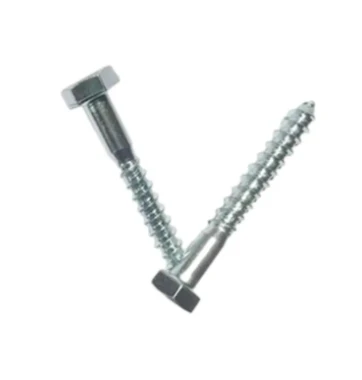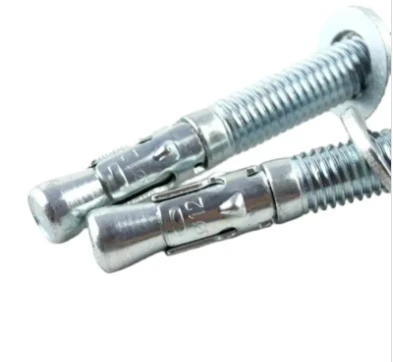Mar . 05, 2025 04:10 Back to list
carriage bolt washers
The process of bolt making is a fascinating blend of traditional craftsmanship and modern manufacturing techniques that are essential in a myriad of industries, from construction to automotive engineering. With growing demand for robust and reliable fasteners, understanding the steps involved in creating high-quality bolts is crucial for businesses and engineering professionals. This comprehensive overview offers insights into the bolt making process, focusing on practical experiences, expert techniques, and authoritative practices.
Heat Treatment Optimizing Mechanical Properties To maximize strength and resilience, bolts undergo a carefully controlled heat treatment process. Depending on the material and application requirements, processes such as quenching and tempering are used to adjust hardness and flexibility. Such treatments are critical for bolts intended for high-stress environments, where failure is not an option. Manufacturers employ top-tier engineers who meticulously program furnace cycles to achieve desired mechanical properties, highlighting the authoritative expertise required in this field. This attention to detail ensures that the bolts meet international safety and quality standards, fostering trust among users. Coating and Surface Finishing Post-treatment, bolts often require protective coatings to enhance their resistance to corrosion and wear. Common methods include galvanization, plating, or adding a coating of protective paint. These coatings not only protect the bolt in adverse conditions but also contribute to its aesthetic appeal. At this stage, manufacturers exhibit their authority on product longevity and appearance by selecting appropriate coatings tailored to specific environments and customer needs. This strategic decision-making reflects trustworthiness, as manufacturers prioritize customer satisfaction and long-term performance. Quality Control Measures The final step in the bolt making process is thorough quality control. Each bolt undergoes rigorous testing procedures to ensure compliance with industry standards. Tests include tensile strength checks, dimension accuracy verifications, and surface quality assessments. Employing cutting-edge technology and experienced inspectors, manufacturers ensure that only those bolts meeting strict criteria reach the market. Reliable quality control reinforces the trustworthiness of bolt manufacturers, guaranteeing that every product delivers on its promised specifications. By investing in comprehensive testing, companies solidify their position as leaders committed to providing dependable fastening solutions. Concluding Remarks The bolt making process is an intricate blend of experience, expertise, authority, and trustworthiness, shaping products that hold structures together and ensure safety across multiple sectors. Those involved in bolt manufacturing continuously refine their processes, adhering to high standards that satisfy both current demands and future innovations in engineering and construction. This dedication to quality and precision bolsters both user confidence and the manufacturer's reputation in a competitive global market.


Heat Treatment Optimizing Mechanical Properties To maximize strength and resilience, bolts undergo a carefully controlled heat treatment process. Depending on the material and application requirements, processes such as quenching and tempering are used to adjust hardness and flexibility. Such treatments are critical for bolts intended for high-stress environments, where failure is not an option. Manufacturers employ top-tier engineers who meticulously program furnace cycles to achieve desired mechanical properties, highlighting the authoritative expertise required in this field. This attention to detail ensures that the bolts meet international safety and quality standards, fostering trust among users. Coating and Surface Finishing Post-treatment, bolts often require protective coatings to enhance their resistance to corrosion and wear. Common methods include galvanization, plating, or adding a coating of protective paint. These coatings not only protect the bolt in adverse conditions but also contribute to its aesthetic appeal. At this stage, manufacturers exhibit their authority on product longevity and appearance by selecting appropriate coatings tailored to specific environments and customer needs. This strategic decision-making reflects trustworthiness, as manufacturers prioritize customer satisfaction and long-term performance. Quality Control Measures The final step in the bolt making process is thorough quality control. Each bolt undergoes rigorous testing procedures to ensure compliance with industry standards. Tests include tensile strength checks, dimension accuracy verifications, and surface quality assessments. Employing cutting-edge technology and experienced inspectors, manufacturers ensure that only those bolts meeting strict criteria reach the market. Reliable quality control reinforces the trustworthiness of bolt manufacturers, guaranteeing that every product delivers on its promised specifications. By investing in comprehensive testing, companies solidify their position as leaders committed to providing dependable fastening solutions. Concluding Remarks The bolt making process is an intricate blend of experience, expertise, authority, and trustworthiness, shaping products that hold structures together and ensure safety across multiple sectors. Those involved in bolt manufacturing continuously refine their processes, adhering to high standards that satisfy both current demands and future innovations in engineering and construction. This dedication to quality and precision bolsters both user confidence and the manufacturer's reputation in a competitive global market.
Next:
Latest news
-
The Ubiquitous Reach of DIN934 in Application Realms
NewsMay.16,2025
-
Exploring Different Bolt Types
NewsMay.16,2025
-
Cracking the Code of Sleeve Anchor Mastery
NewsMay.16,2025
-
Clamp Design Principles,Types and Innovations
NewsMay.16,2025
-
Artistry Inspired by the Humble Anchor Bolt
NewsMay.16,2025
-
A Deep Dive into Screw Types
NewsMay.16,2025


